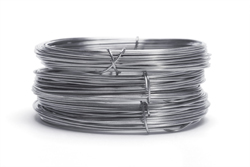Removing contaminants from passivation baths
Increases in material and operating costs combined with competition from low-wage countries has led to a significant decrease in European production of galvanised metals. A large European consortium initiated the EU-funded project 'Towards an innovative galvanic industry' (TIGI)(opens in new window) to develop technology to reduce costs and environmental impact, increasing European competitiveness in this area. Galvanised steel parts electroplated with a corrosion-protecting zinc (Zn) coating often undergo a final post-fabrication process called passivation. The parts are placed in a dilute acid bath — conventionally nitric acid but increasingly more eco-friendly citric acid. The acid removes contaminants, including particles of iron (Fe), and forms a chemically non-reactive (passive) surface layer consisting of a very thin, corrosion-resistant chromic oxide film. The lifetime of the passivation bath is severely limited by the build-up of Zn2+ and Fe3+ impurities. This imposes financial and environmental burdens due to the need for frequent disposal of contaminants and replacement of materials. In addition, the European Commission has imposed restrictions on the use of chromium and new chromium-free passivation fluids are much more expensive. TIGI scientists set out to increase the lifetime of passivation baths from six weeks to two years. Selective separation of Zn2+and Fe3+impurities without removing chromium and other necessary components was achieved through emulsion pertraction technology (EPT). EPT combines the efficiency of emulsion liquid membranes with the cost-effectiveness and low-power consumption of hollow fibre cross-flow systems. Industrial units were optimised with modelling and preliminary testing. Long-term testing of industrial units showed that the EPT system prevented an increase in 'tramp' ion concentration over time. In fact, it outperformed almost all stated project objectives, including selectivity, bath life extension, waste reduction and enhanced product quality. In addition, a life-cycle assessment highlighted benefits of using the system and the unit price was within stated objectives. Passivation is critical for many hi-tech components in the medical device and aerospace sectors, and approximately 80 % of companies in the galvanising industry employ the process. Implementation of TIGI technology has the potential to significantly enhance the competitive position of this sector with decreased costs and increased product quality.



